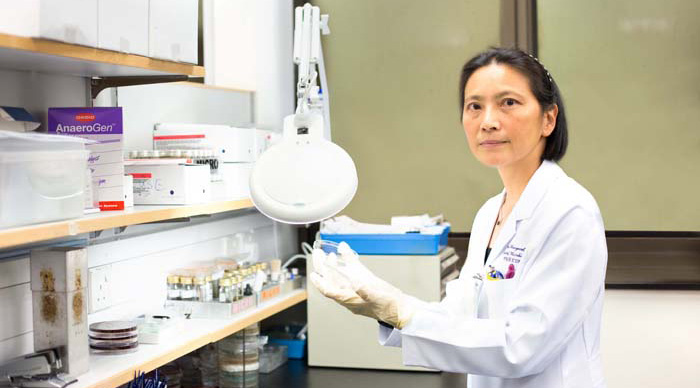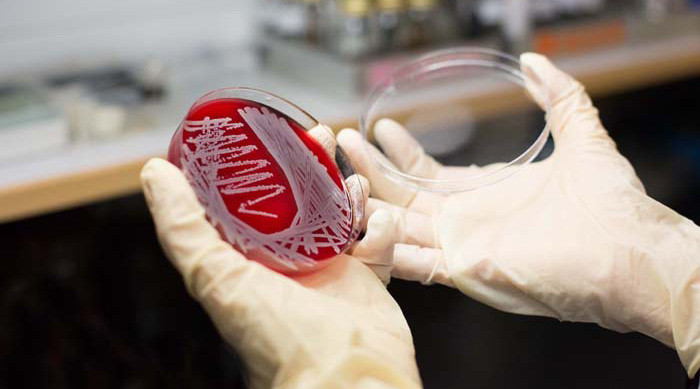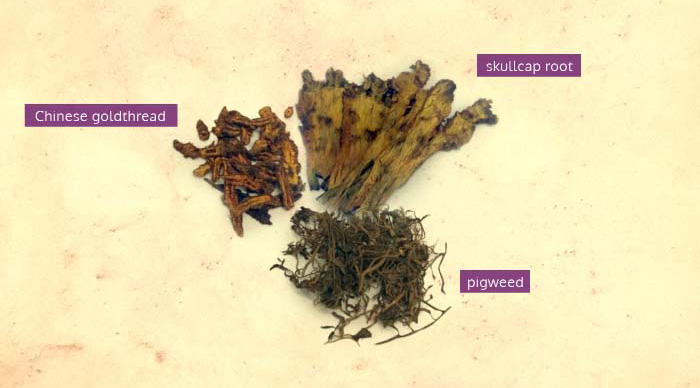Dear readers, With the launch of e-newsletter CUHK in Focus, CUHKUPDates has retired and this site will no longer be updated. To stay abreast of the University’s latest news, please go to https://focus.cuhk.edu.hk. Thank you.
Offensive Against a Superbug: Efforts to contain deadly bacteria within the community

Prof. Margaret Ip
Department of Microbiology
It's like a scene from the blockbuster Contagion: a powerful superbug, virtually unstoppable with current drugs, spreads from one person in Asia out to a few others. It spreads. The hosts die. And it spreads again.
Only it isn't a movie. The bug is here, and the number of cases in Hong Kong has doubled since people first started tracking it a few years ago. It's becoming more powerful. And it's Prof. Margaret Ip's job to stop it.
Chinese speakers may know the bug by the name "Golden bacteria." The English name is somewhat less catchy, MRSA in short, or methicillin-resistant Staphylococcus aureus. But whatever you call it, the bug is a deadly threat, particularly in hospitals, where it can spread like wildfire among people with open wounds and depleted immune systems.
"It can be frightening," Professor Ip says. "It is much more complex than we thought."
The reason MRSA is hard to combat is that it has worked out a way to resist almost all antibiotics, perhaps because doctors prescribe them too often. What used to be a threat mainly only within hospitals has broken out of the ward and is increasingly common among the general public – so-called "community-associated MRSA."
The typical first symptom is a tiny dot or pimple, which many victims think at first is a spider or mosquito bite. But it is in fact the first sign that the bacteria have broken through the skin and are starting to make a home for themselves in the body.

MRSA bacteria secrete a variety of toxins, one of the most potent being Panton-Valetine leukocidin, or PVL, which punctures the wall of white-blood cells, the body's normal first line of defense against infection. Once they've made a home in a host, they create puss-filled boils or lesions that expand quickly, normally in the layer between the skin and muscle.
In the worst cases, they break through the fascia, the muscle's barrier layer, and begin spreading fast, potentially into the blood, joints or organs, which can lead to amputations and/or even death.
Professor Ip's work targets the deadly bacteria in two ways: by mapping the "pathways" the bacteria use to produce their toxins, to work out how to block them; and by finding drugs that can ward off the effects of the toxins, or at least reduce them.
The study of the pathways considers how the bacteria grow, and at what stage they produce their poisons and release them. Disrupting any of those phases would make it easier to prevent the damage they cause.
Finding new drugs that can combat MRSA is important because at the moment, the default treatment is to use the one antibiotic that does kill the bug: vancomycin. But that requires a hospital stay and an intravenous drip.
"It is the last gun to treat it," Professor Ip notes. "It means treating it with an agent that also has toxicity, and leaves no other options."
What's more, MRSA are fighting back by developing resistance to vancomycin as well, a process that will speed up the more that the antibiotic is used. Professor Ip is examining how to create new drugs that could counter MRSA without the need for vancomycin.
Part of the microbiologist's work involves cooperating with CUHK's Institute of Chinese Medicine to examine how several herbs used in traditional medicine combat MRSA. She is examining how the active ingredients kill the bacteria, and whether they also kill our own healthy cells, with the idea of purifying the compounds and, if all goes well, synthesizing them for mass production.

Professor Ip believes herbs such as the skullcap root, pigweed and the Chinese goldthread hold promise, particularly in combatting community-associated MRSA, which is a different strain than the kind found in hospitals. She is investigating whether the active ingredients of those herbs could be distilled and used in dressings or as a coating for catheters, meaning intravenous drugs aren't necessary.
One of the difficulties in tackling MRSA is that it has morphed into different strains in different parts of the world. Perhaps because of conditions, genetic traits or the disinfectants used for cleaning, the bacteria form various kinds of resistance. ST30, for instance, is common in the Philippines, and increasingly common in Hong Kong.
The good news for Asia is that the most-common types of MRSA, the Taiwan clone and the South West Pacific clone, don't have the toxin that helps the bacteria puncture the white cells. The bad news – very bad news, in fact – is that those clones resist more drugs, more strongly than their counterparts in the West.
"It is not like there's one magic bullet," Professor Ip says. "They are very clever, you see, and different strains do different things, unfortunately."
By Alex Frew McMillan
This article was originally published on CUHK Homepage in Feb 2014.